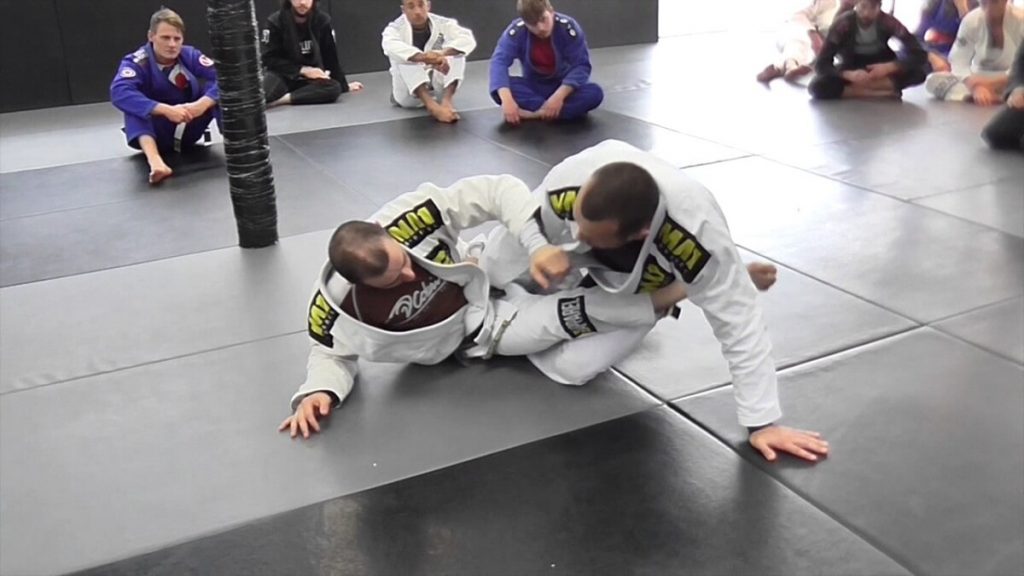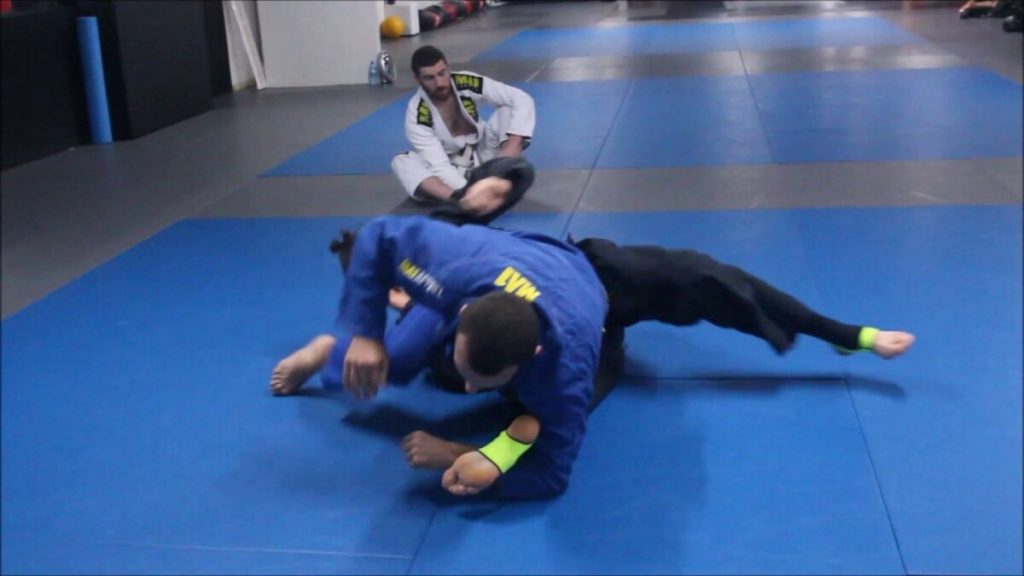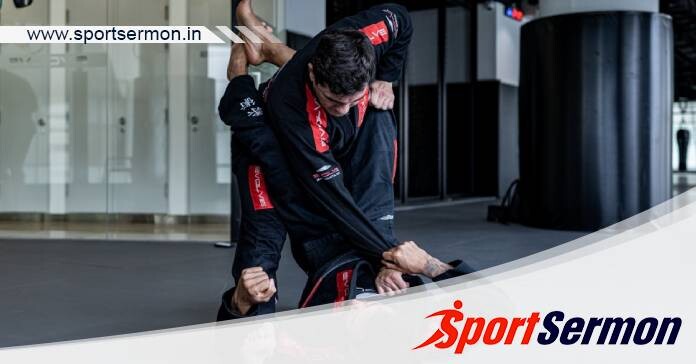BJJ Lumberjack Sweep: Brazilian Jiu-Jitsu is a martial art that places a strong emphasis on the guard. In order to prevent an opponent from gaining a dominant position that might result in submissions, the guard is employed as a defensive strategy. The guard’s ability to be in an offensive position is what makes it valuable.
You can use kuzushi to outbalance and sweep your opponent from the guard position, winning the battle. If you really want to get fancy, you can even switch over to submissions as they happen. Even at the white belt level, learning sweeps is suggested as it is an essential component of guard work. Sweeping tactics will teach you mechanics that will significantly raise your skills on the pitch.
Today, we’ll discuss the Lumberjack sweep, which is among the most fundamental BJJ techniques.
You might also be interested in reading this: An Overview of BJJ Meregali Sweep
The BJJ Lumberjack Sweep

Most often, a newbie in BJJ will learn the closed guard as their first guard type. It is a fairly simple yet effective guard that may encircle and imprison opponents. A minimum of a few submissions and sweeps in the closed guard should be known by every grappler. It is best to assault your opponent when they are trying to get past your defences since they will stop at nothing to go past you.
The lumberjack sweep from the locked guard is a very strong move up to the black belt level. It’s usually used when the other player decides to lower their defences.
Using a cross-sleeve hold, undertake their leg with your other hand as they rise up. To increase your sweeping force, you can keep your hips up. If you’re not flexible enough, you may also drop your hip a bit and utilise that to drive towards your opponent’s knee, or the knee of the leg you’re underhooking.
Matches begin with the heads up. You can ask your partner to begin your roll in the closed guard during training, or in any other position. However, in a competition, drawing the guard while still standing could be the simplest method to obtain the closed guard right away.
The BJJ lumberjack sweep finer intricacies are displayed by Roger Gracie Academy’s Charles Negromonte and Kywan Gracie Behring. Take a stance, leap into the closed guard, grab the opponent’s sleeve with your cross-sleeve, and use your near arm to underhook their leg. When your opponent is standing with proper form, you can usually barely touch the floor with your head. When this occurs, disrupt their posture by using your hips and grasp to drag them down.
Because your opponent’s natural response would be to rise up and reclaim their posture, secure your underhook by placing their ankle close to your biceps. As you bridge up to sweep your opponent, turn your hip over their knee.
Hold onto your underhook and cross-sleeve grip and maintain your bridge position once the sweep is finished. Maintain as much elevation in your hips as you can to prevent your opponent from straightening up and taking the closed guard position.
The opponent cannot rise because of your hip bridge and the way your legs are cinched around your waist. Release your underhook, but keep your sleeve hold in place, and approach the mount.
Lachlan Giles shows off another variation of the lumberjack sweep. As soon as your opponent assumes a really squared-off attitude, this strategy works. In many aspects, a squared posture is solid, but if you can reach your feet, it becomes quite risky. However, as it does not provide you the same leverage, do not attempt this sweep while your guard is too near.
Start by lowering your hips, opening your guard, and positioning it close to their centre of gravity. As you extend your legs and hold both ankles, push and elevate your hips to sweep the opponent.
Lift the opponent a little and pull their ankles if they are pressing forward.
Just as your opponent is ready to collapse, seize a cross collar hold, place your other hand on the mat, and then rapidly slide your hips up beyond their hips to settle on the mount. Kindly pay attention to this crucial detail—missing the opportunity to secure a cross-collar hold and follow-up will lead to a chaotic situation.
Chaining With Submissions

Securing the position is crucial in BJJ before attempting submissions. Some grapplers like to fully dominate with pins before trying submissions, while others prefer to apply submissions more quickly and successfully. Finding what works best for you is a part of the BJJ adventure.
Making decisions quickly is sometimes necessary, particularly when the opposition is making a strong effort to hold onto a position. Consider the lumberjack sweep as an illustration. When you are preparing to mount up, your opponent will often put their hand to your chest after you have swept them.
When that occurs, you can attempt an armbar by sweeping your legs over your opponent’s posting hand and finish with a corkscrew armbar even before establishing the mount. Follow if your opponent rolls.
You may also apply a triangle by using the same response as your opponent, which is to post on your chest. You can transfer the cross-sleeve hold to your other hand after the sweep by releasing it. You may shoot your legs up and go for a triangle while the opponent pushes you and rises.
Similar to the sweep, you may employ the armbar, triangle, and omoplata submissions by passing your cross-sleeve hold to your other hand if your opponent regains their stance and stands up after the sweep.
If you are a skilled grappler, you may apply a knee bar by keeping your underhook while lowering your knee and placing your other foot on the same side of the underhook as the opponent. You should be able to achieve a great knee bar from there if you perform a back roll while rotating with your hips high.
Conclusion
Sweeps are an essential component in wrestling. By using sweeps, you may get into a more dominant position and continue attacking from your back. Having a difficult guard will always make you a more complete grappler, even though it is always preferable to play on top.

